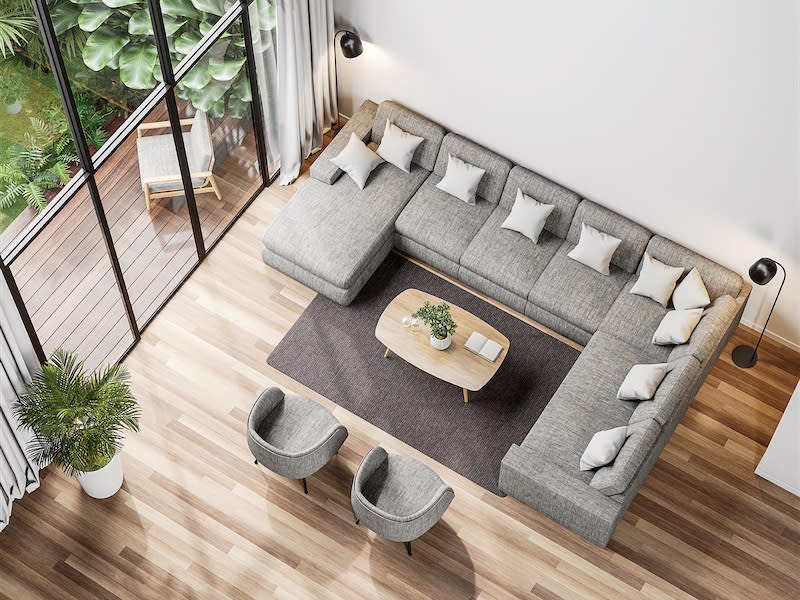What makes a home green?

The experts view a "green" home as a living space designed to prioritize environmental friendliness and sustainability
The “green” word used today is a multifaceted term that is used to embody the principles of sustainability and environmental stewardship, with the ultimate goal of prioritising the long-term well-being of the planet and its inhabitants.
At WATG, we view being green beyond just environmental decisions. We consider factors such as holistic wellness that extends from dwellers to staff, preservation and enhancement of the site, engagement with the local community such as with local artisans and artists to ensure their craft, culture and heritage are celebrated and continued, as well as delivery of long-term client success as part of being sustainable.
It is about striking a delicate balance between environmental resilience, social responsibility, and economic viability, to ultimately achieve harmony between humans and the greater natural world.
A crossover phenomenon between hospitality and residential design is happening today as hotels inject the essence of home into their property to cater for multigenerational stays and extended bleisure travels while homes are designed to provide a getaway retreat experience.

Chiara Calufetti-Lim is principal & studio director of architecture at WATG
For our recently launched project Umana Bali LXR, our architecture, landscape architecture studios and Wimberly Interiors came together to transform an existing 72-villa clifftop resort into Southeast Asia’s first LXR Hotels & Resorts property. We looked to the profound local philosophy Tri Hita Karana — harmony with the divine, with people and with nature, as our source of inspiration. This philosophy is a cornerstone of Balinese culture and has been widely attributed as a way to balance the agenda of economic growth with cultural preservation and environmental protection to ensure the well-being of both the Balinese people and their island home.
With over three decades of experience in Bali resort design, we found this philosophy to be the exemplar of being green and deeply resonant. Some of the renovation strategies we executed were the preservation of existing structural columns and foundation, and revitalising key pieces of the existing property. These strategies maximise economic efficiencies in the property’s enhancement by reducing costs associated with building new and most importantly minimising waste.

Paolo De Simone is creative director of Wimberly Interiors
Leveraging on our years of expertise in hospitality design, our lens to residential and home designs is guided by our hospitality ethos based on the core tenets of welcome, warmth, memorability, and restoration. We design and conceive a green home in a similar approach we would for a green resort. The building and construction sector is responsible for 37% of global emissions. As responsible designers, we understand the critical role we play and often ask ourselves “Do we have to build new?”, “What can we conserve and repurpose?”.
Prioritising renovations and transformation of existing built forms will contribute significantly to being green. We propose as much as possible using materials with less embodied carbon, repurposing existing site materials as much as possible for renovation projects and deploying a regenerative approach to reduce impact and preserve biodiversity. In fact, this is part of the “WATG Way” of design that we practice on our projects — a nod to our founders’ legacy of pushing boundaries of possibility since our dawning days in 1945.
By consciously responding to the residential development’s site location, we design architectural forms that are shaped by orientation, daylight and natural ventilation considerations. Intrinsically linking design solutions to the site results in maximised opportunities for passive and sustainable strategies to be incorporated from the onset, in addition to other known advantages such as maximising views of the outdoors to induce serenity and tranquillity.
Biophilic design is an approach we champion, first led by our founder Pete Wimberly and reflected in many of our projects. It emphasises the importance of integrating natural elements into the built environment to foster a deep connection between humans and nature for overall well-being. Key elements of biophilic design include vegetation, natural light, and sensory engagement.
Vegetation, such as indoor plants and botanical wall coverings, is central to biophilic design because it enhances positive feelings and accelerates recovery from stress. Ample access to sunlight is crucial as it helps regulate circadian rhythms and boosts mood. Passive heating and cooling, achieved through natural ventilation and strategic shading, contribute to comfort and energy efficiency. Sensory engagement, through natural textures like wood and stone, and elements like water features, creates a holistic experience that nurtures the innate human-nature interaction.
As humans, we continuously aspire to be healthier, more mindful and aligned with being present. As designers, we have to think beyond just green walls or catering ample fitness amenities but how the overall space touches and feeds holistically into our well-being, the mind, and the soul. We need to design for well-being from the start by thinking of how the users will use the space and bring in every healing opportunity that goes beyond aesthetics and functionality. For urban dwellers, incorporating biophilic design can be as simple as repositioning furniture to maximise views of nature, using indoor plants as room dividers, creating small herb gardens, or simply dedicating spaces to centre oneself for mindfulness pursuits. These intentional choices not only improve aesthetic appeal but also promote relaxation and well-being, making biophilic design an essential aspect of modern interior design.
We design spaces to lift the spirits. Through the medium of design, stories can be narrated to form an emotional bond with the dwellers. At the end of the day, a home should be green and above all, serve to bring joy to our everyday.
Founded in Honolulu in 1945 by George “Pete” Wimberly, WATG is an integrated design firm with five studios — Advisory, Master Planning, Architecture, Landscape Architecture and Wimberly Interiors, designing spaces that respect, protect and enhance the natural magic of their surroundings while delivering long-term value for clients and communities.
Chiara Calufetti-Lim is principal & studio director of architecture at WATG. Paolo De Simone is creative director of Wimberly Interiors
See Also:
Click here to stay updated with the Latest Business & Investment News in Singapore
CapitaLand Investment increases focus on its Scope 3 emissions
Get in-depth insights from our expert contributors, and dive into financial and economic trends

 Yahoo Finance
Yahoo Finance 